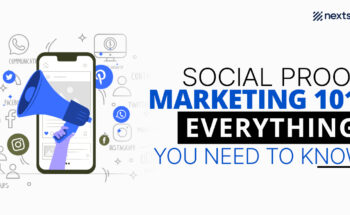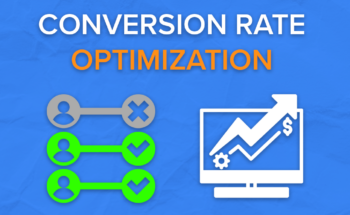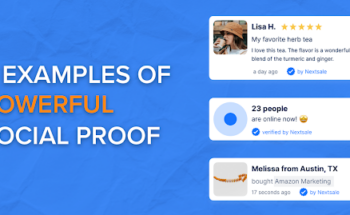
Did you know that more than 70% of online shoppers feel frustrated when the shopping experience is irrelevant and not personalized?
Many eCommerce stores have switched their marketing strategies to provide personalized shopping experiences for their visitors and customers. According to SmarterHQ, 72% of consumers say they engage with only personalized offers. Taking this stat into consideration, you wouldn’t want to be left behind since you may lose a great number of your customers to your competitors.
Personalization simply means you display offers, content, products based on your visitors’ data. By creating visitor segments based on their demographics, purchasing patterns, and behavior in your store, you decide who should see your messages and offers. By doing this, you get away from providing the same approach to all your customers.
In this post, we’ll go over some of the benefits, examples, and tips of using the personalization of user experiences.
Why Personalization Matters
With the increased usage of content personalization, marketers have been carrying out tons of research about the effectiveness of it.
Here are some of the fascinating results:
- “Personalization can reduce customer acquisition costs by up to 50%.” – Adweek
- “Companies using advanced personalization report a $20 return for every $1 spent.” – Clickz
- “91% of consumers say they are more likely to shop with brands that provide offers and recommendations that are relevant to them.” – Accenture
- “More than 50% of consumers are willing to share information on products they like in order to get personalized discounts.” – Retail TouchPoints
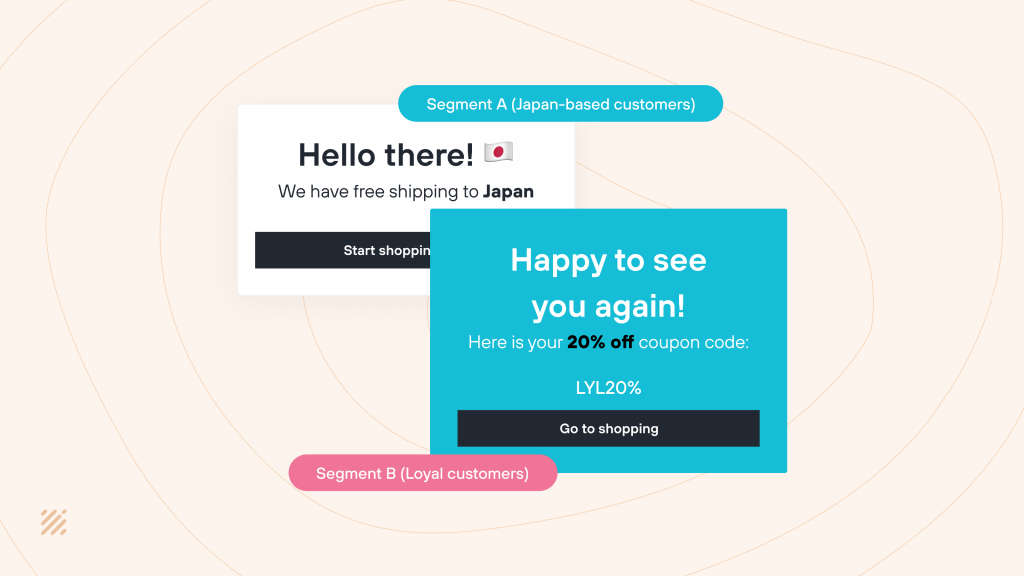
Overall, content personalization has the following benefits in the short run:
- Increased visitor engagement and time spent on site
- Increase in conversions (sales & lead generation)
- Easy targeting
- A better understanding of site visitors
- Further personalization of email marketing and approach to customers
Page-level vs. behavioral targeting
There are basically two types of targeting: page-level and behavioral targeting.
Page-level targeting is about reaching an audience on the page content they are currently visiting. It is about the exact moment that visitors interact with a web page.
Behavioral targeting includes a targeting strategy based on the visitors’ behavior and engagement patterns with your site.
Depending on your business type, you could also have other, more specific visitor segments.
How to create visitor segments
In the Nextsale dashboard, go to the settings section. Here, you will see 2 options: devices, context, conditions and advanced options.
Go to the devices, context, and conditions to set triggers for on-site messages and create segments. Here you can see that there are context options in which you can match your product and notifications to make them relevant to a particular product page.
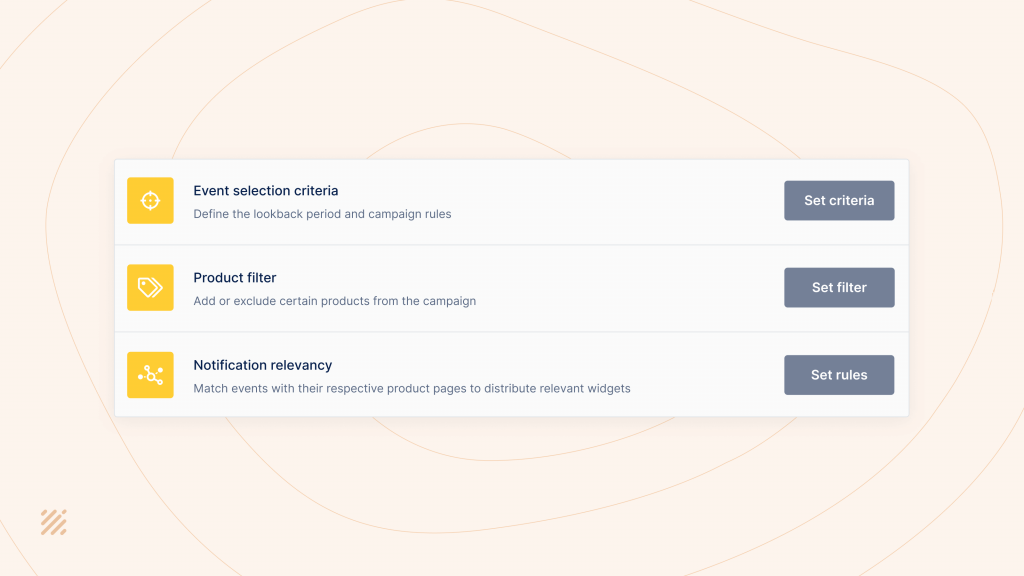
Choose the segmentation option to add conditions for creating customer segments.
If you play well around these conditions, you win.
Adding segment conditions simply means defining who should see your message.
Here, all you need to do is setting conditions for your segments. You can create visitor segments by using the following conditions:
- Cart content
- Geolocation
- Browser language
- Visitor session
- Spent on-site & scroll triggers
- Shopify logged-in users
- IP addresses limitations
How to personalize content: popups & onsite messages
To target specific audiences and create customer-specific content for on-site messages, you don’t need coding skills at all.
Here are on-site popup personalization features that you need to add conditions for them and examples by Nextsale that you can use on your eCommerce site to engage visitors and convert them into loyal customers.
Cart content
Visitors can add one or several products to their shopping cart or basket for purchase. Depending on the visitors’ cart value, you can display cart content-specific offers.
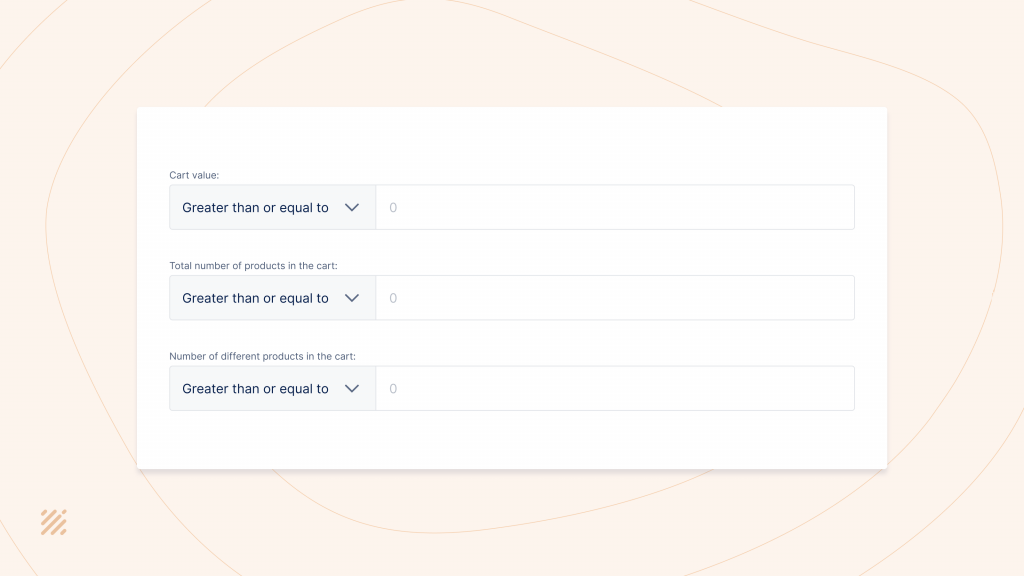
Nextsale’s cart content feature allows you to define a range or the exact number of values. It’s either total value, the number of products, or the number of different products added to the shopping cart that helps you display personalized, on-site messages.
Displaying exit-intent popups that are optimized with personalized cart content can actually reduce cart abandonment.
Geotargeting
If you’re running an ad campaign in a specific country, the geotargeting feature is a great help to personalize your on-site messages for the visitors living in that country.
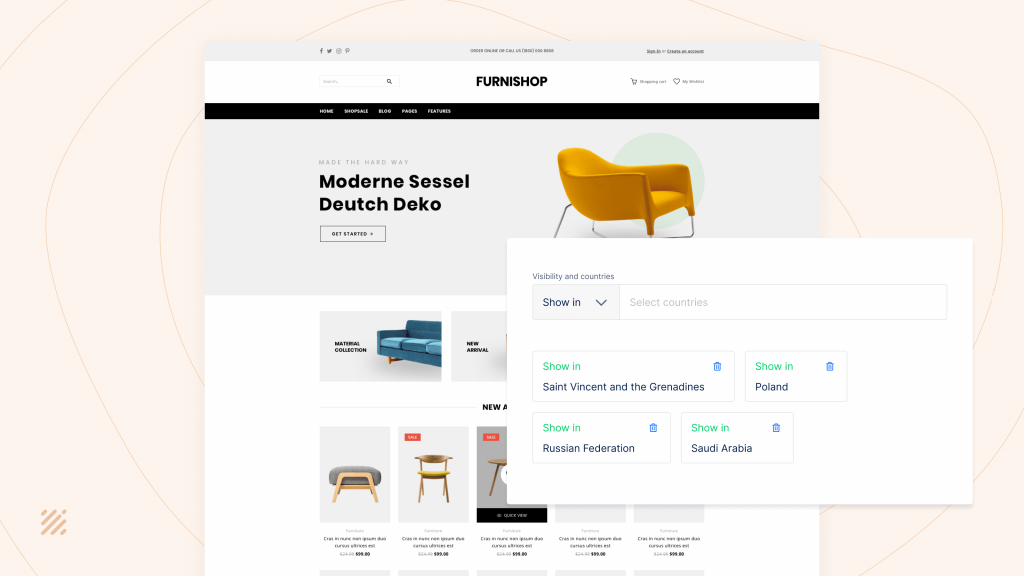
Or, you may want to include or exclude certain countries. In the dashboard, you can list countries for your campaign to show or hide. By doing this, you not only personalize your content but also save impressions and prevent the non-targeted audience from seeing your offers.
Browser language
For getting the most from the personalization, it’d be better to optimize your campaign for visitors’ browser language.
Use this case: you’d want to exclude all the countries except France in your campaign for a marketing strategy or any other reason. For that setting, anyone in France, including foreigners to the country, will see your on-site messages. In order to funnel your content audience, in this case, you need to change browser language to French too for efficiency and effectiveness.
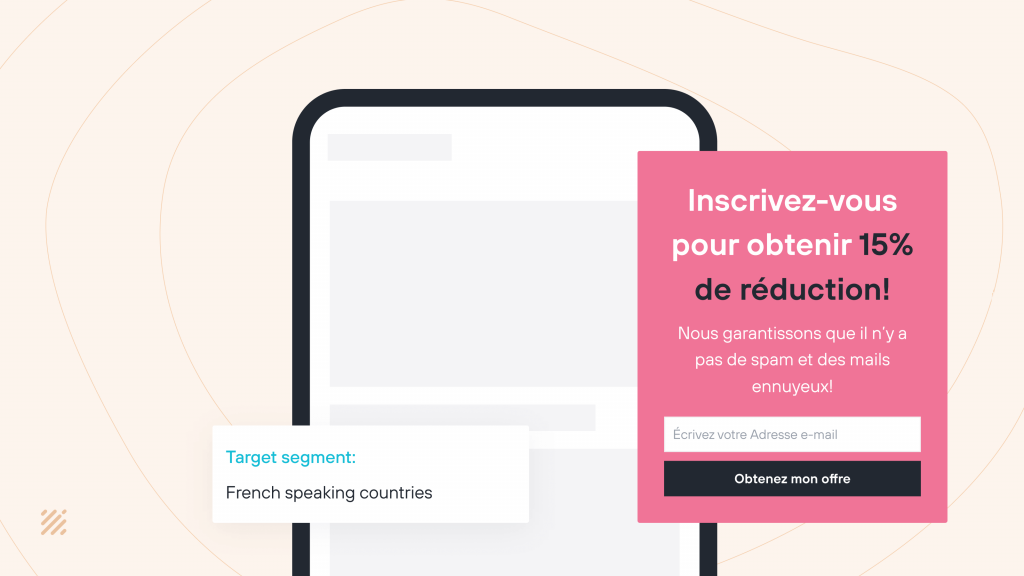
Visitor sessions
Displaying content based on the visitors’ sessions is another type of personalization feature that you can use. Simply, you show one kind of content to the first-coming visitors’ segment and another kind to returning visitors.

On the content side, it’s better to include a message that you, as a site administrator, know your visitors, thus personalizing their shopping experiences.
This way, you can also motivate your one-time customers to come back to your site to make purchases and establish your customer loyalty programs.
Spent on-site & scroll
With the spent on-site feature, you can set your campaign to be visible to the audience who at least spent X amount of time on the site or scrolled down a certain percentage.
By using this feature, you also avoid annoying your visitors.
Shopify logged in users
Nextsale’s this feature allows Shopify merchants to personalize their on-site messages for Shopify logged-in users. As a Shopify merchant, you may want to show different content to logged-in and non logged-in users. For instance, by offering higher discounts to registered and logged-in users and letting them know your offers, you can encourage your visitors to sign up on your site.
IP Addresses
You can also exclude certain IP addresses from your campaign. By doing so, you block IP addresses and prevent visitors in certain locations from being your target audience.
You can either list the IP address range or specific locations in the dashboard.
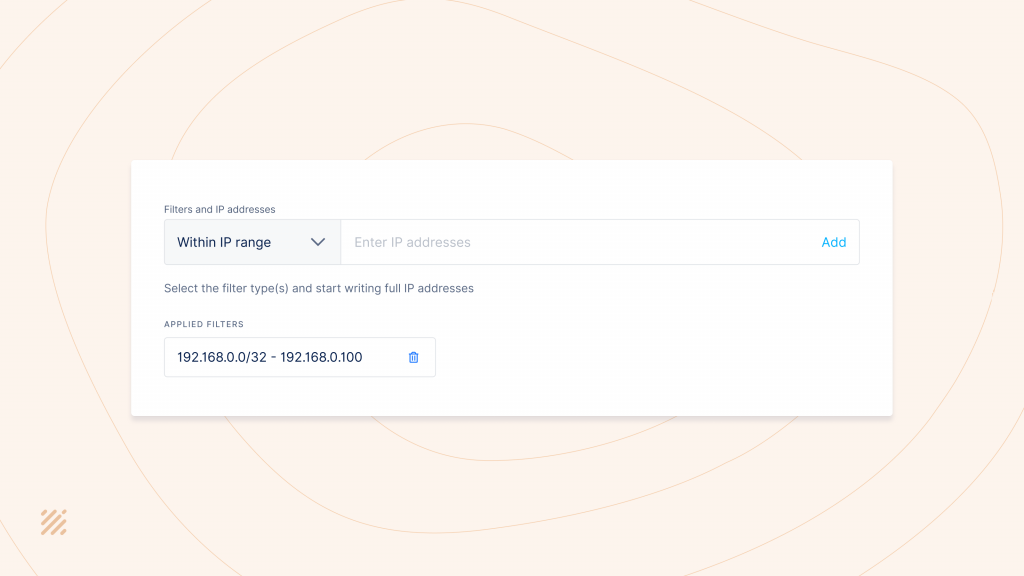
Long-run benefits of website personalization
The future of digital marketing seems to be adapting personalized website content to Internet users more than ever. Backed by AI, each visitor can see different content when they land on a web page.
Now, personalization takes control of the entire digital marketing strategies and makes the marketers think twice about practices. Here are the reasons why the personalization strategy pays off in the long run:
- Better analysis of visitors and customers. Creating segments of visitors allows you to understand better your customers: where do they come from? What is their language? How do they behave? What do they prefer? You can easily group your target audience with the help of a wealth of customer information.
- Accurate targeting and retargeting. This helps save time and money spent on data acquisition and customer retention and facilitate stretching marketing strategies.
- Efficient A/B testing. By segmenting customers based on their treats, you better flesh out data to see what is working and not.
- An overall increase in revenue. With user experience personalization, companies can increase their ROI by 3 times (Monetate).
- Creating a loyal customer base at a lower cost. Here, you also save time and money while carrying out creating customer loyalty programs.
Conclusion
No doubt that content personalization takes place in the core heart of digital marketing strategies. Its impact on both the short and long-run shows that it’s inevitable not to apply content personalization and targeting specific customer segments. Also, it’s important to use software for on-site popups and notifications that covers the majority of the segmentation features.
Try Nextsale’s free trial to explore more features to boost up conversions.



